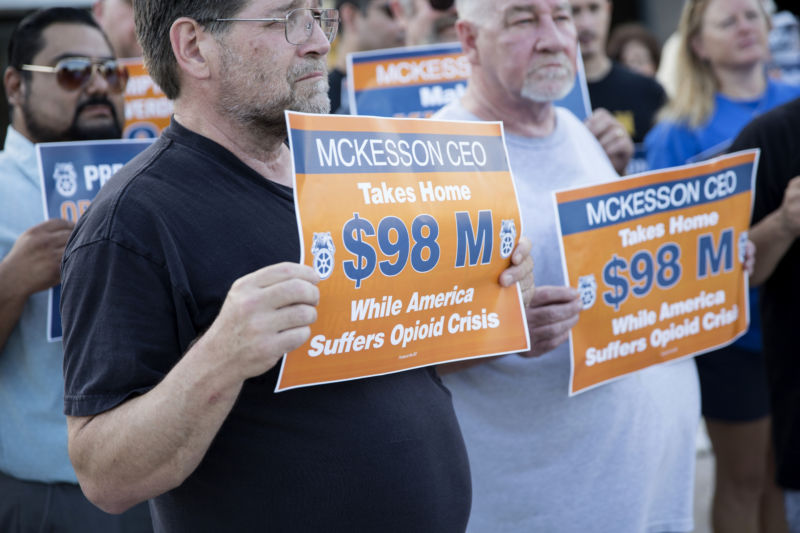-
Basement Dweller


DEA tracked every opioid pill sold in the US. The data is outóand itís horrific
etween 2006 and 2012, opioid drug makers and distributors flooded the country with 76 billion pills of oxycodone and hydrocodoneóhighly addictive opioid pain medications that sparked the epidemic of abuse and overdoses that killed nearly 100,000 people in that time period.

As the epidemic surged over the seven-year period, so did the supply. The companies increased distribution from 8.4 billion in 2006 to 12.6 billion in 2012, a jump of roughly 50%. In all, the deluge of pills was enough to supply every adult and child in the country with around 36 opioid pills per year. Just a 10-day supply can hook 1 in 5 people into being long-term users, researchers have determined.
The stunning supply figures were first reported by the Washington Post and come from part of a database compiled by the Drug Enforcement Administration that tracked the fate of every opioid pill sold in America, from manufacturers to individual pharmacies. A federal court in Ohio released the data this week as part of a massive consolidated court case against nearly two-dozen opioid makers and distributors, brought by nearly 2,000 cities, towns, and counties. The local governments allege that the opioid companies conspired to saturate the country with the potent painkillers to soak up billions in profits. The companies deny the allegations, arguing generally that they were serving the needs of patients.
According to an analysis of the data by the Post, just three companies made 88% of the opioid pills: SpecGx, Actavis Pharma, and Par Pharmaceutical, a subsidiary of Endo Pharmaceuticals. Purdue Pharma ranked fourth, making 3% of the pills. Just six companies distributed 75% of the pills: McKesson Corp., Walgreens, Cardinal Health, AmerisourceBergen, CVS, and Walmart.
he Post also noted that the distribution was concentrated in certain places, finding that West Virginia, Kentucky, South Carolina, Tennessee, and Nevada had the top pill-per-person-per-year rates of all states, ranging from 66.5 to 54.7. West Virginia, which had the highest distribution rate, also had the highest opioid death rate during this period.
But certain rural areas were also hard hit, with Norton, Virginia, receiving 306 pills per person per year and Mingo County, West Virginia, receiving 203.
While the local governments suing the companies have had access to this data during the litigation, it was only released to the public after the Washington Post and HD Media, publisher of the Charleston Gazette-Mail of West Virginia, sued and waged a year-long legal battle. The drug companies had fought to keep the data hidden from the public, arguing that it revealed ďtransactional dataĒ that could be used by competitors. The Department of Justice also argued against the release, saying it could compromise investigations.
A three-judge panel sided with the media organizations last month. This past Monday, US District Judge Dan Polster removed a protective order allowing the release of part of the DEAís database, called Automation of Reports and Consolidated Order System, or ARCOS. Data from years beyond 2012 are still being withheld to protect the companies and DOJ investigations.
From 1999 to 2007, nearly 400,000 people in the US died from an opioid overdose, according to the Centers for Disease Control and Prevention.
-
The Following User Says Thank You to Godfather For This Useful Post:
 Posting Permissions
Posting Permissions
- You may not post new threads
- You may not post replies
- You may not post attachments
- You may not edit your posts
-
Forum Rules








 Reply With Quote
Reply With Quote